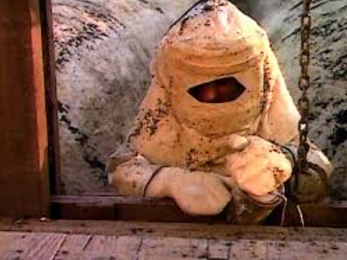Our concept for TestZoo when it was conceived was simple, if ambitious:
“all your tests, available all the time, executable at any scale“
Deciding on the first release of the service focussed on the greatest value out of the box we could provide for SaaS and web applications. Problems that we ourselves were facing. So again the decision on our first phase was rather straightforward: we wanted to make the simplest way to do load and performance testing on the web.
But naming the service? Oh, the grief and debates that did cause.
In the end we settled on TestZoo, as you’ve probably worked out. Amongst other reasons, it was conceptually the most analogous to what we were trying to do. We know with our first release target focussing on a narrow set of web and performance tests, the full extent of the metaphor won’t be grasped. But over time we want TestZoo to be the place to execute your tests of any size and shape.
Oh and okay, because it meant we were allowed to draw squirrels riding lions…

A menagerie of tests
TestZoo will be a menagerie of different testing beasts of all shapes and sizes that you can let loose on your web site or software at any time to see how it holds up.
- What happens when a curious monkey starts pushing all the buttons chaotically (simulation of unpredictable users)?
- How about when a rhino hits your system at full charge (replicating heavy hitting power users)?
- Will the lights stay on when a little mouse gets into the smallest crack and starts nibbling on the wires (bad actors who get in behind the defences)?
- Will you keep your visitors safe while swarms of ants try to get to your sugar pile inside (how secure is your application and your users under massive load)?

Yes, we know a zoo for ants is not terribly exciting as a concept, but undoubtedly swarms of ants are a concern for anyone with even vague memories of MacGyver.

“All creatures tests great and small” really encapsulates what TestZoo is intended to be. We want to provide the easiest way to run both smallest and largest tests. From pinging a URL to ensure it’s responsive and not full of errors. To massive scale, worldwide load testing scenarios simulating the effect of unprecedented traffic from globally important news.
Like, a new photo of Kim Kardashian pouring a drink, for instance.
What else does a zoo do?
Zoos bring diverse things together. You don’t have to hunt through the jungle or sub-antarctic ocean to find the animals these days. Go to the zoo, pick up a map, maybe a hotdog while you’re at it, and take a leisurely stroll to find exactly the beast you want, in the place you expect it.
Want to see a polar bear and a penguin? Good luck doing that in the wild. But go to the zoo and they’re probably housed next to each other (sadly no one seems to have calculated the minimum distance between penguins and polar bears in the wild but I work it out to be 13 950km. Quite a swim).
In our view, it needs to be as easy to do the smallest test as the biggest one even when they’re fundamentally different in approach. TestZoo has been designed specifically to bring together these different test types. You don’t have to have many tools and accounts for all the different facets of your testing. Our framework allows tests to be kept accessible, but safely segregated. After all, you wouldn’t want the penguins put in with the polar bears!
TestZoo as ultimate test curator
The flourishing open-source ecosystem is an amazing asset, but it also leads to fragmentation and that has a cost on productivity. Much like life on earth, where many thousands of species are still discovered every year, reading through industry news or searching through GitHub for tools is like a tropical expedition.
It’s a wondrous thing and the variety is immense, which is great for the ecosystem, but not so for the individual expert who can’t possibly keep up with the advances in the science. What that leads to is specialisation.


While it’s great to have specialists who can tell their deer tick from their sheep tick, for most people so long as they can tell their kitty from an escaped lion, they’re probably going to be okay.
The same goes for developers. Rather than keeping up with the proliferation of testing tools and spending all day working on corner cases of implementation, in most cases the most productive approach is simply to just get something, quickly and painlessly into your development cycle.
With TestZoo we aim to provide the common interface for tests, allowing them to be stored together and run in whatever way suits your fancy. You also have access to test sites from around the globe from the comfort of your local PC (or tablet or phone) so there’s no need to hunt to the ends of the earth to bring them together.
To start off with we will focus on JMeter, Selenium and the like. These are the zoo equivalents of elephants and lions in the testing world. Every zoo worth it’s salt has to have them, but they don’t make it unique. But over time we’ll bring together the best open-sources tools we find (or that you ask us for) .
Test Conservation Area
Testing in the cloud gives other advantages too. Like the Galapagos Tortoise, populations with a strict geographical habitat in the wild expose them to unnecessary risk of failure.
By collecting up the tests and both storing them and running them in a distributed manner we protect both their existence and their outputs from disturbance. And yes, I just compared our service to a tortoise breeding programme…
The analogy is pretty fitting we think, though we’ve some work to do to fill all the enclosures.
Please, help us along – sign up for beta and help suggest what new inhabitants we should get next!
Hungry Lion by Tambako the Jaguar 
Adorable Kitten by khanb1 
